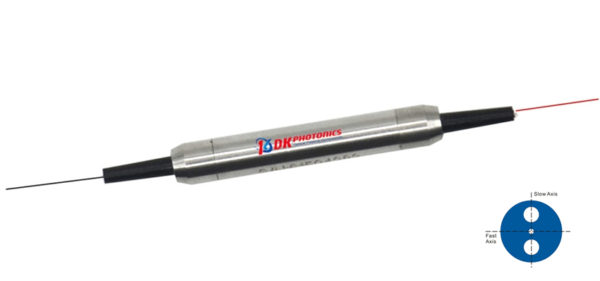In the telecommunication industry, the use of optical devices has increased dramatically as they offer high performance, optimum efficiency and excellent reliability. But the truth is that deploying light waves is not easy because they are highly susceptible to noise and interference. Fortunately, these issues can be resolved by the use of fiber optic polarizers. They greatly enhance the signal performance in fiber optic systems by suppressing unwanted interference patterns.

Fiber optic polarizers are placed inline so that the extinction characteristics of the fiber optic cable get improved. Due to their inline placement, these are also called in-line polarizers. The good thing about these polarizers is that they allow the transmission of only one polarization and block the remaining light which has unpolarized states.
So, to maintain the polarization and decrease the degradation in polarization, optical polarizers are necessary. Otherwise, there will be noise interference and the performance of the entire fiber optic system will decrease substantially. An ideal fiber optic inline polarizer is the one which transmits linearly polarized light that has a high extinction ratio and low insertion loss.
Here, linear polarization means the electric or magnetic field is confined to the plane in the direction of wave propagation. Extinction ratio refers to the ratio of the power of a plane-polarized beam transmitted by the polarizer to the transmitted power when polarizer’s axis is perpendicular to the plane of beam and insertion loss is defined as the attenuation caused by the insertion of an optical component.
Characteristics
The light waves transmitted by fiber optic systems are usually characterized by the length of wave i.e. wavelength. The carrier signal is further determined by the signal’s optical power which is measured in dBm or mW.
Wavelength: Human eye can detect wavelengths from 400 to 700 nm which is referred to as visible region. However, fiber optic systems transmit the longer wavelength from red (650 nm) to infrared region. It is caused by the characteristics of the transport medium i.e. the optical fiber. Shorter wavelengths are attenuated due to the scattering effect of light source and they are further attenuated by the absorption bands at specific frequencies.
The main three wavelengths which are used for fiber optic systems are 850, 1300, and 1550nm. 850nm wavelengths are primarily used in plastic optical fiber and multimode fiber. Multimode fiber can also be used to transmit 1300 nm carrier signals, however, single mode fiber can transmit even longer wavelengths such as 1310nm, 1490nm, and 1625nm.
Optical Power: The power of an optical signal is a measure of wavelength and photon density. Fiber optic communication systems use very low power signals. It can be measured in dBm and mW. dBm and mW have logarithmic relationship. The power level of 0 dBm is equivalent to 1 milliwatt.
If you are also searching for fiber optic in-line polarizers, you can easily place an order with a reputed polarizer manufacturer online.